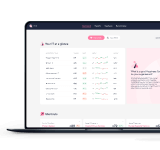
How ANU moved towards end-to-end experience ownership with ITXM
Feisar Joya, Manager of the Service Management Office (SMO), and Tiffany Vincent, IT Service Management Specialist represent a team determined to elevate how IT services are delivered and perceived across this research-driven academic institution.
From operational metrics to human-centric value
Before HappySignals, ANU relied on Net Promoter Score (NPS) tools that, while functional, often missed the deeper insights.
“We used to have the ‘watermelon effect,’” Feisar shared. Green on the surface, but red at the core.
The mission became clear: To mature service delivery with customer experience at its core. The arrival of HappySignals marked a pivotal shift.
One of the first tasks was a cultural transformation. Instead of using feedback punitively, Tiffany and Feisar educated teams across ITS that HappySignals was about improving experiences, not assigning blame.
Feisar illustrated the point with a memorable story: when a barista remembers a customer's name and order, that’s value.
But giving a customer a chocolate biscuit without knowing if they like chocolate? That’s a misaligned effort. The lesson: to create recognized value, IT must understand its users, not just serve them.
This philosophy translated into day-to-day operations, too.
The team overhauled its outage communications strategy with color-coded notifications, significantly reducing stress during incidents.
They also revamped resolver groups, reducing ticket reassignments and response times by clarifying ownership and responsibilities.

Example demo data from HappySignals
Turning feedback into action
With HappySignals, ANU introduced a follow-up process for all feedback below a score of 6, ensuring users felt heard and respected.
That accountability became contagious, shifting the mindset from siloed ownership to ITS-wide collaboration.
As Tiffany put it, “HappySignals empowered us to unify our support teams with an end-to-end approach.”
From 2024, ANU data shows that:
-
Incident NPS rose to 83, with an average perceived lost time dropping from 4 hours and 56 minutes to 3 hours and 22 minutes
-
Request NPS climbed to 88, and average lost time nearly halved from almost 5 hours to under 3
-
Despite a suboptimal portal experience, feedback helped the team prioritize critical fixes while planning for a ServiceNow upgrade

Example demo data from HappySignals
One of the key takeaways Feisar and Tiffany emphasized is that user experience isn't a team-by-team concern.
When a ticket is closed poorly, it doesn’t matter who dropped the ball. The user sees one ITS.
That’s why ANU has been diligent about not letting NPS be used as a team performance tracker. Instead, it’s a barometer for the university’s IT experience as a whole.
They’ve also started using HappySignals data as a tool to inform business cases and recognize their teams.
“IT is usually remembered for what breaks,” Feisar noted, “but with this, we can finally celebrate what works.”
Both leaders agree that implementing HappySignals required effort—but the alternative, staying reactive, was far harder on teams and users alike.
Tiffany's advice? “Take a page out of Nike’s book. Just do it,” she said.
COMPANY
- The Australian National University (ANU) is one of Australia’s premier institutions, with a deep commitment to research, innovation, and education. Their IT Services group functions at a scale and complexity, supporting over 22,000 staff and students across multiple campuses.






